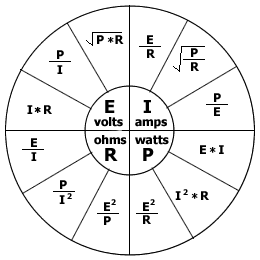No but as you see in the picture, there are a heck of a lot of them!
They look tinned. How do they do that?
Thinking about it, 1.65 feet of that 3200 strand has a mile of wire in it.
No but as you see in the picture, there are a heck of a lot of them!
I too wondered how you could have 3,200 bobbins spinning at the same time to make that wire. Then I realized, and you can see in the picture, that there are individual smaller bundles that are then put together to make the final product. So it is a cluster of cluster of wires that make up that many strands.They look tinned. How do they do that?
I take your math for it. If you look up the price, you see that even on ebay, and coming from China, these are very expensive wires. The specific wire that I posted was tested and it actually outperforms 6 gauge wire and it is closer to 5. Its insulation is also rated to 200 degrees.Thinking about it, 1.65 feet of that 3200 strand has a mile of wire in it.
I have 30 year old copper MONSTER thick cables, no green oxidation whatsover, jackets are clear and pliable. Amazing. Guess I just got lucky.
This is in regards to speaker cables. Factors that go into it are:
1. Research shows that the threshold of hearing of resonances in low frequencies is 0.5 db. That is, we can detect when the frequency response varies by 0.5 db or more. Source: Sean Olive and Floyd Toole
2. Assumption about the maximum (roundtrip) length of typical speaker cable in home systems. (22 feet or 44 feet round trip)
3. Typical resistance of 12 gauge wire (4.01 milliohms)
4. Nominal impedance of speaker in low frequencies (3 ohm)
Using the above, we see that for 22 feet of 12 gauge wire, the drop is at the threshold level of 0.5 db. If your run is longer than this, then you need to use even thicker gauge.
In other words, for most people, 12 gauge wire has less impact than 0.5 db and as such it is a safe choice.
Amir, how did you come to the conclusion that 12 AWG is large enough?

What are your thoughts about sizing cable to reduce eddy currents and in turn distortion? Have you measured noise levels in higher AWG cables compared to lower AWG?
Here's a description of what I'm referring to.
That's a cool demonstration.
Fortunately our systems don't operate by attempting to move large copper slugs around in even larger hollow copper conductors.
I take it since you're using 2 AWG cables you either don't agree with the idea of eddy currents or you know nothing about them.
Well...
I wouldn't dare to disagree with the "idea" of eddy currents. That the phenomenon exists seems to be beyond reproach.
However, I have not noticed any audio issues here which have led me to be concerned about it in either power-carrying (speaker) nor signal (interconnect) cables.
I have only one tonearm cable here, and it has been idle since 1974.
I think we can all agree our systems don't operate exactly like that. It was a visual demonstration. Comparisons can be challenging when the imagination is involved. I'll take it you have no knowledge or insight on the subject or else you would have said something helpful like in the previous post. That was much appreciated, thanks.
I take it since you're using 2 AWG cables you either don't agree with the idea of eddy currents or you know nothing about them. I admittedly know nothing about them and have no opinion yet. I came across this theory when searching for an adequate tonearm cable which transfers a very small voltage. I was wondering if there could be any truth to eddy currents in audio.
Sure. Eddy currents are the reason the famous "skin effect" exists. From the wiki page there is this helpful graph which looks similar like what is shown in the video:What are your thoughts about sizing cable to reduce eddy currents and in turn distortion? Have you measured noise levels in higher AWG cables compared to lower AWG?
Here's a description of what I'm referring to.


This is a worthwhile read: http://www.roger-russell.com/wire/wire.htm and more specifically http://www.roger-russell.com/wire/wire.htm#wiretable
That table is based upon loss only. Speaker crossovers generally assume a zero-home (or nearly) voltage source so long wire runs can change the frequency response. How much and if it is audible depends on the speakers, your hearing, etc. Note Canare 4S11 is four 14 AWG wires, suitable for a pair of speakers. Also note that, if the runs are to "background" speakers or otherwise non-critical then you can get away with longer runs.
HTH - Don
